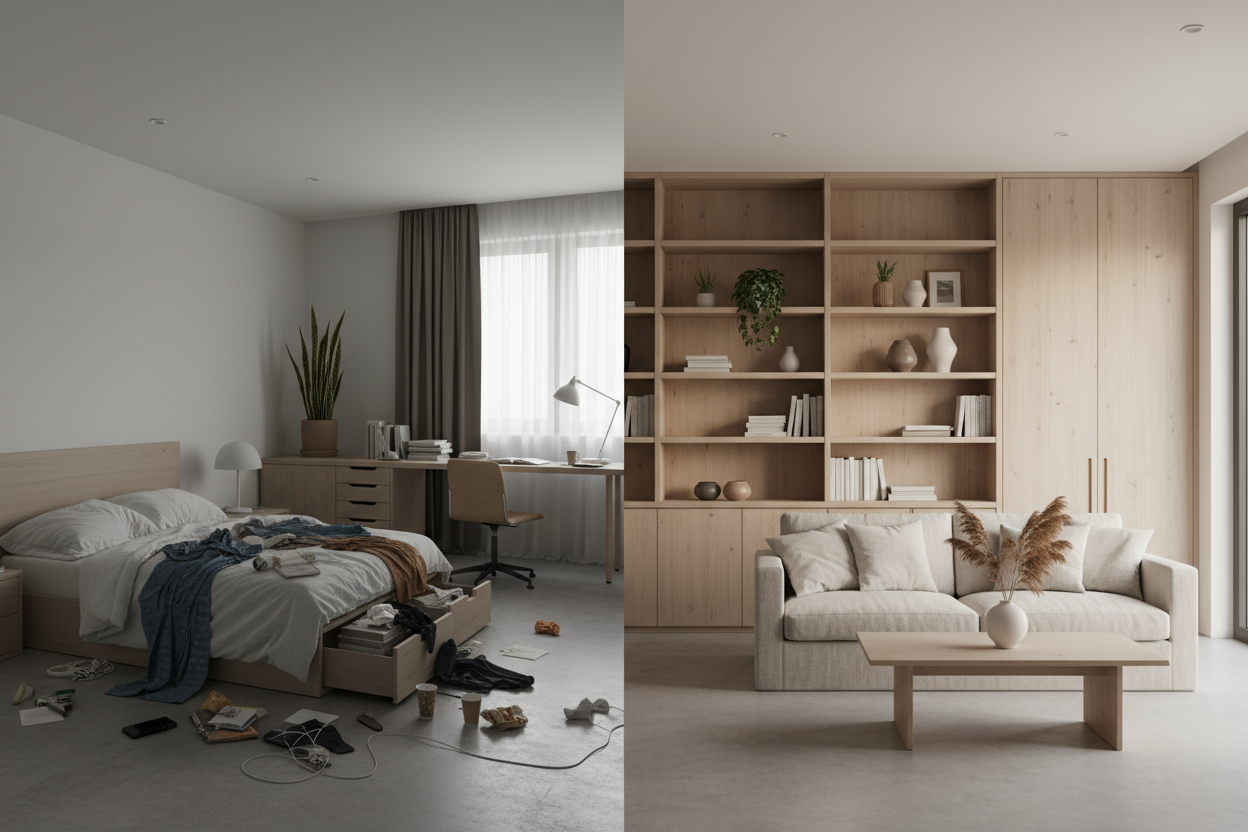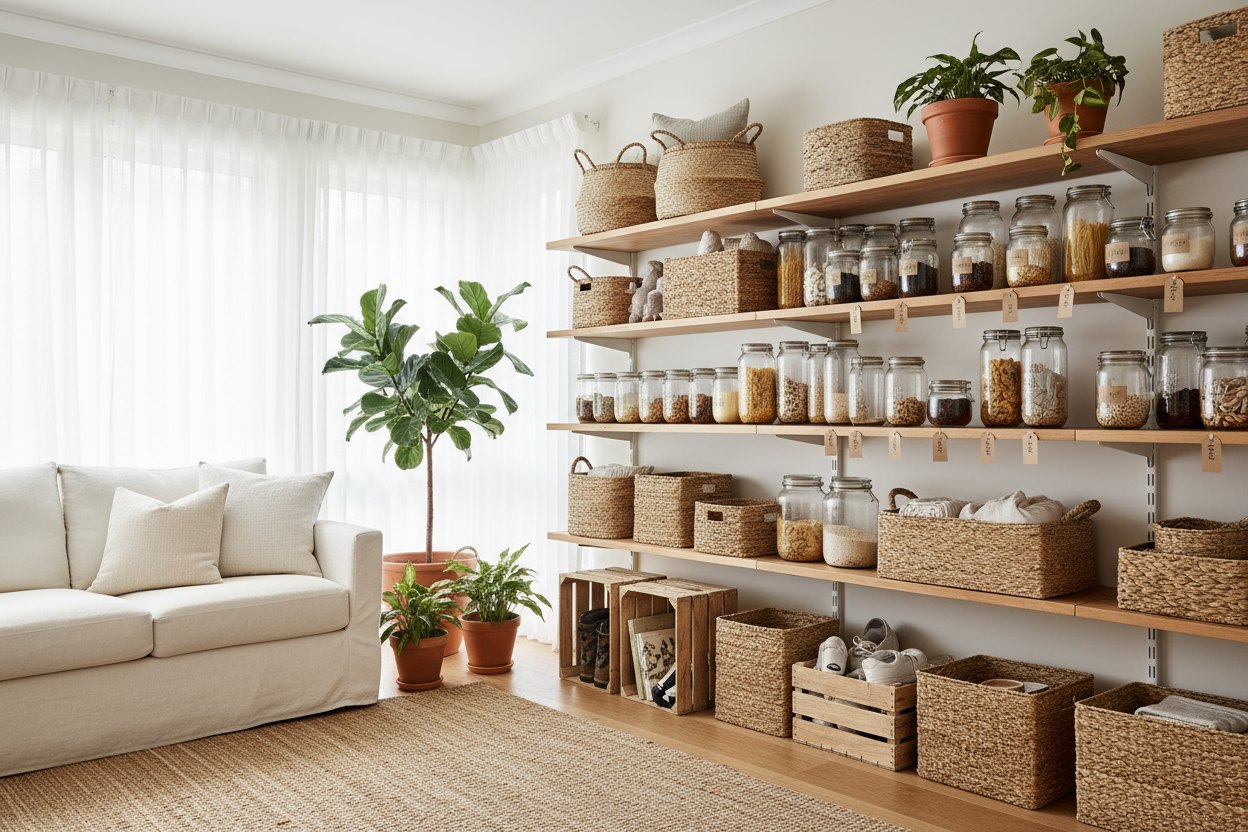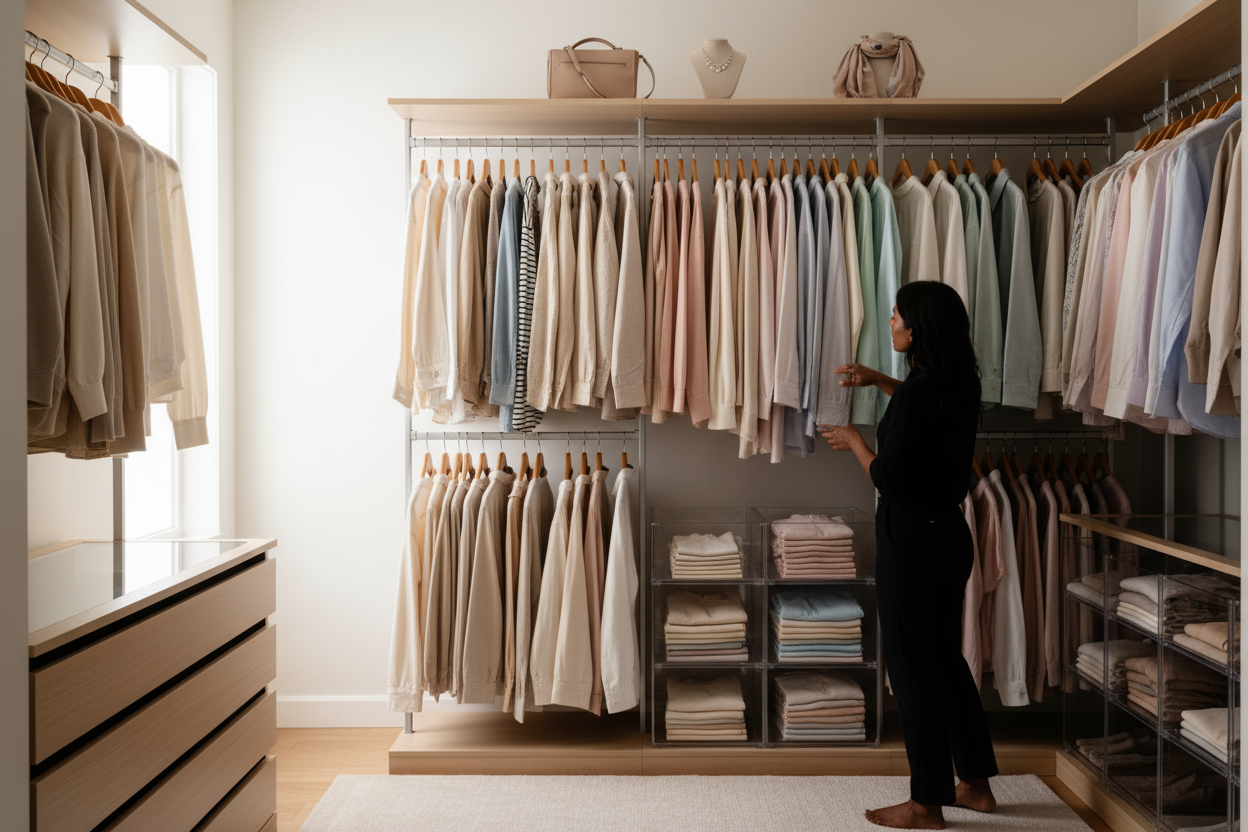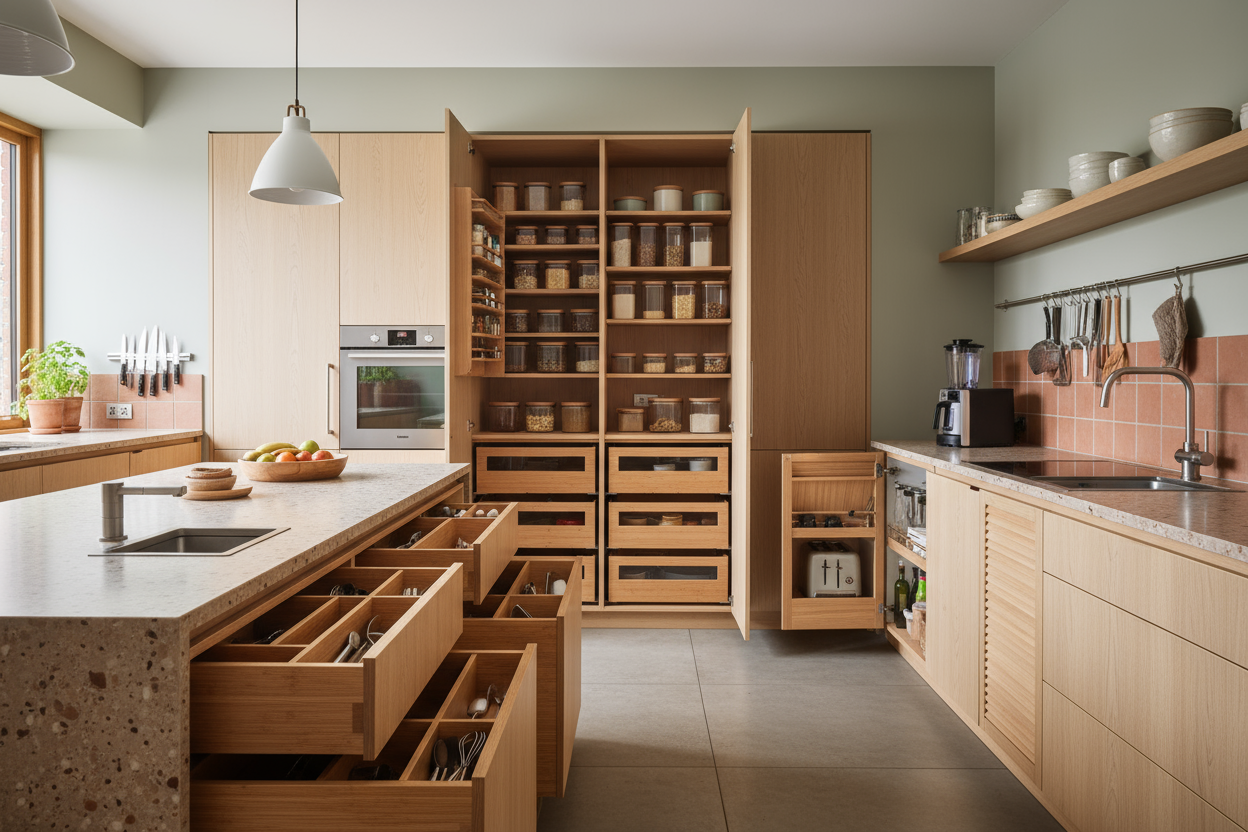As the seasons change, so does your wardrobe. Spring brings the perfect opportunity to refresh your closet, making room for lighter fabrics while storing away heavy winter gear. However, seasonal wardrobe organisation goes beyond simply swapping clothes. It's about creating a system that works year-round, helps you identify what truly serves your lifestyle, and transforms your closet into a functional space that brings joy rather than stress.
Many people approach closet cleaning with the mindset of "what should I get rid of?" This often leads to overwhelm and decision fatigue. Instead, successful seasonal wardrobe organisation starts with a more positive approach: identifying and keeping your favourite, most-worn pieces. This shift in perspective makes the entire process feel less daunting and more rewarding.
Start With What You Love
Before you begin sorting through clothes, take a moment to identify the items in your wardrobe that you genuinely love and wear regularly. These are your wardrobe workhorses, the pieces you reach for time and again. This positive approach reduces decision fatigue because you're focusing on what adds value to your life rather than dwelling on what doesn't.
Pull out your favourite pieces and set them aside. Notice what they have in common. Do they share similar colours? Are they made from particular fabrics? Do they have a consistent fit or style? Understanding why certain items work well for you provides valuable insight for future purchasing decisions and helps guide your organisation strategy.
When I first applied this method, I noticed most of my favourites shared soft fabrics and a slightly fitted silhouette. Recognising that helped me confidently let go of several pieces I'd held onto 'just in case.'
Once you've identified your favourites, use them as a benchmark for evaluating other pieces. Ask yourself whether each remaining item complements your favourite pieces or stands alone. Items that work well with your core wardrobe deserve prime closet real estate, while pieces that don't integrate easily might be candidates for donation or storage.
The Try-On Test
For items you're unsure about, conduct a practical try-on test. Put on each questionable piece and attempt to create complete outfits with it. This exercise quickly reveals whether an item truly belongs in your active wardrobe or has been taking up valuable space.
During this process, pay attention to how each piece makes you feel. Does it fit comfortably? Do you feel confident wearing it? Can you easily create multiple outfits with it? If you struggle to style an item or feel uncomfortable wearing it, this signals it's time to let it go.
Consider the practical aspects too. Does the garment require special care that you realistically won't maintain? Has the fit changed due to alterations in your body shape or personal style preferences? Being honest about these practical considerations helps you make decisions based on your current lifestyle rather than past intentions or future hopes.
Create a Temporary Storage Solution
For items that fall into the "maybe" category, create a temporary storage system. Pack these uncertain pieces away in boxes or storage bags, clearly labelled with the date. Store them out of immediate sight but in an accessible location.
This approach creates emotional distance between you and these items, making it easier to evaluate their true value in your life. Set a reminder for three to six months later to review these stored pieces. You'll likely find that items you haven't thought about or missed can be donated with confidence.
This method works particularly well for seasonal transitions. Items you're unsure about for spring might prove their worth during summer, or you might discover you don't miss them at all. The key is giving yourself permission to wait before making permanent decisions while still clearing immediate closet space.
Wardrobe storage solutions can help you implement this system effectively, providing designated spaces for both current and temporary storage needs.
[collection-carousel="wardrobe-storage"]
Develop Your Colour Strategy
Successful seasonal wardrobe organisation benefits from a coherent colour strategy. Choose a foundation of two to three base colours that work well together and complement your skin tone. These might be neutrals like navy, grey, and cream, or they could include one statement colour that you particularly love.
Add one or two accent colours that pair well with your base palette. This approach ensures that most items in your wardrobe can mix and match easily, reducing the mental energy required for daily outfit planning and maximising the versatility of each piece.
When transitioning between seasons, evaluate new purchases against this colour strategy. Pieces that fit your established palette will integrate seamlessly, while items that don't might end up as expensive orphans that rarely get worn.
Quality Over Quantity Considerations
During uncertain economic times or periods of personal change, consider keeping quality items even if they don't currently fit perfectly. Well-made pieces often prove their worth during lean periods or when your circumstances change. (insert peer-reviewed citation)
A blazer that's slightly too formal for your current job might become essential if you change careers. High-quality basics that don't fit perfectly now might be worth tailoring or keeping for future weight fluctuations.
However, balance this practical approach with realistic storage constraints. If keeping rarely-worn quality pieces means cramping your daily wardrobe, consider whether the trade-off serves your current needs.
Track Your Actual Clothing Usage
Implement a simple tracking system to identify which clothes you actually wear versus which ones you think you wear. One effective method involves turning all hangers backward at the beginning of a season. When you wear and return an item, hang it facing forward. After three months, items still hanging backward clearly haven't earned their closet space.
Alternatively, add small stickers or tags with dates to items you're uncertain about. When you wear something, remove the tag. This visual system quickly reveals which pieces are contributing to your daily life and which are simply taking up space.
For folded items in drawers, try placing them all with tags facing one direction, then flip the tag after wearing. These simple tracking methods provide objective data about your actual clothing preferences rather than relying on memory or wishful thinking.
Organise by Season and Accessibility
Once you've curated your wardrobe, organise remaining items by season and frequency of use. Current-season pieces should occupy the most accessible areas of your closet, with frequently worn items at eye level and easy reach.
Professional organisers recommend grouping clothes by type first, then by colour within each category. (insert peer-reviewed citation) This makes it easier to see what you own and prevents duplicate purchases. Hang similar items together: all tops in one section, all trousers in another, organised light to dark within each group.
Use physical organisation tools to maximise your space and maintain your system. Shelf dividers prevent folded stacks from toppling, while drawer inserts keep smaller items contained and visible. The key is creating designated spaces for different types of clothing so everything has a clear home.
Storage for Off-Season Items
Off-season clothes should be clean before storage to prevent stains from setting or attracting insects. Natural fibres benefit from breathable storage containers, while synthetic materials can typically handle plastic storage boxes.
Label storage containers clearly with contents and the date packed. Include a brief list of key items inside each container so you can locate specific pieces without unpacking everything. Store these containers in closets, under beds, or in other accessible but out-of-the-way locations.
Decision-Making Frameworks
When you're still uncertain about specific pieces, apply practical decision-making frameworks. Ask yourself: "Would I buy this item today at full price?" This question cuts through sentimental attachment and focuses on current value.
Another useful filter is: "Would I be excited to pack this for a week-long trip?" Items that don't make the cut for hypothetical travel probably don't deserve daily closet space either.
Consider the cost-per-wear ratio for expensive pieces. An expensive dress worn once has a high cost per wear, while a moderately priced jacket worn weekly represents excellent value. This framework helps justify keeping quality pieces you use regularly while highlighting expensive mistakes that can be donated guilt-free.
Maintain Your Organised System
Successful seasonal wardrobe organisation requires ongoing maintenance rather than annual overhauls. Schedule brief monthly reviews to identify pieces that aren't working and address small issues before they become major problems.
Implement a "one in, one out" policy for new purchases. When you buy something new, identify a similar item to donate. This prevents closet creep and maintains the curated feel you've worked to achieve.
At the end of each season, spend fifteen minutes noting what worked well and what didn't. Which pieces got the most wear? What gaps did you notice? These observations inform future purchases and help refine your personal style over time.
Quality coat hangers help maintain the shape and longevity of your carefully curated pieces, while specialised organisers like bra organisers keep delicate items in perfect condition.
[collection-carousel="clothes-hangers"]
Building Your Ideal Wardrobe System
For those ready to invest in a comprehensive wardrobe organisation solution, modular systems offer flexibility and longevity. These systems grow and adapt as your needs change, whether you're moving homes, changing careers, or evolving your personal style.
Consider your specific storage challenges when choosing organisation tools. Do you need more hanging space, better drawer organisation, or solutions for awkward closet shapes? Hanging wardrobe organisers maximise vertical space, while comprehensive systems like the Elfa wardrobe solution provide customisable options for any space.
Remember that the best organisation system is one you'll actually maintain. Choose solutions that align with your natural habits and lifestyle rather than trying to force yourself into systems that feel overly complicated or high-maintenance.
[collection-carousel="wardrobe-storage-solutions"]
Moving Forward With Confidence
Seasonal wardrobe organisation is ultimately about creating a closet that supports your daily life while bringing you joy. The process takes time and patience, but the results are worth the effort. A well-organised wardrobe saves time during busy mornings, reduces decision fatigue, and helps you feel confident in your appearance.
Remember that your wardrobe should evolve with your life. What works for you now might need adjustment as your circumstances change, and that's perfectly normal. The skills you develop during seasonal organisation, particularly the ability to honestly evaluate what serves your current lifestyle, will benefit you far beyond closet management.
Start small if the process feels overwhelming. Focus on one category of clothing or one section of your closet rather than tackling everything at once. Success builds momentum, and even small improvements in organisation can have significant impacts on your daily routine and overall satisfaction with your wardrobe.
Written by a lifestyle contributor who has guided hundreds of readers through seasonal home organisation strategies. This article is based on practical techniques used in real-life wardrobe overhauls.






